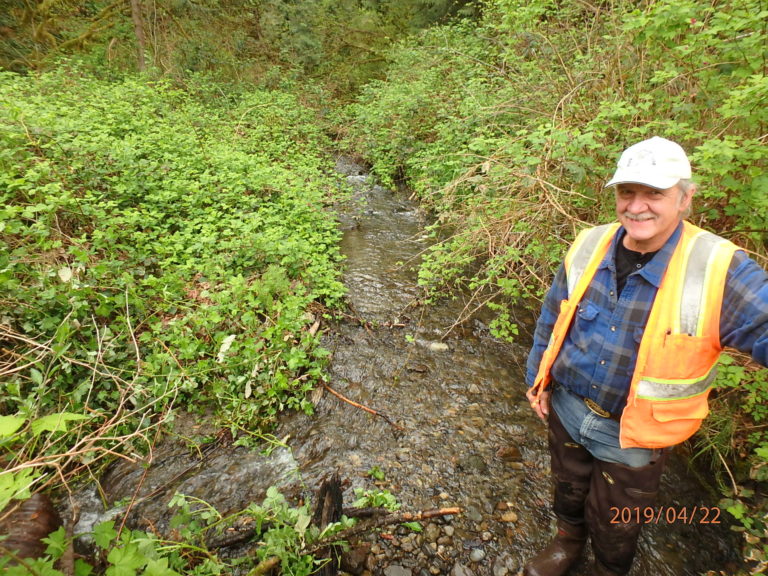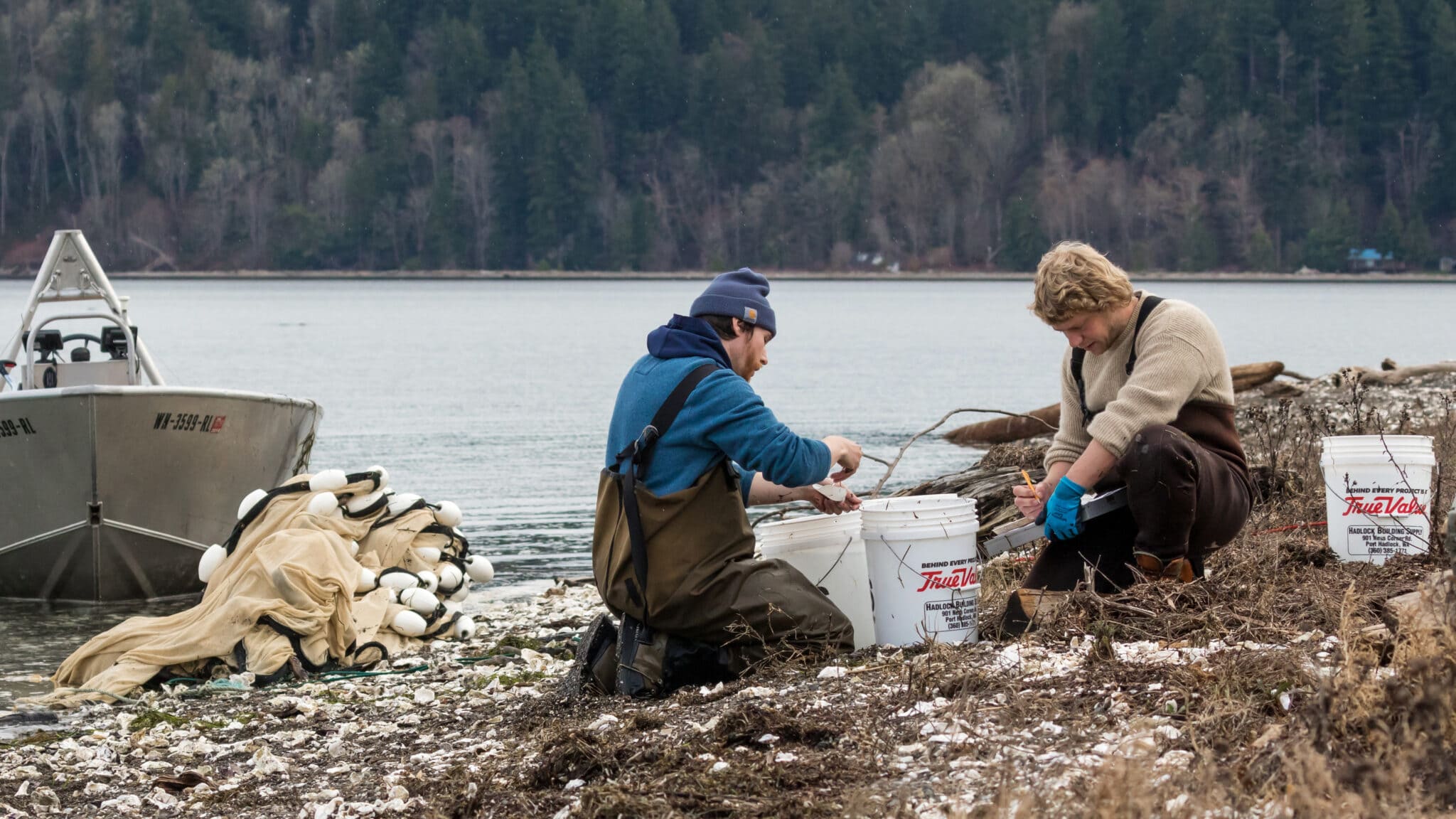

Wild Fish Conservancy initiated a nearshore fish use study in Hood Canal, Admiralty inlet, and the Strait of Juan de Fuca, in Puget Sound, Washington State, to address major data gaps in the abundance, spatial distribution, species composition and the timing of juvenile salmonid out-migrations. Through a combination of beach seining and fyke netting, biologists and volunteers began documenting outmigration patterns of juvenile salmonids at sample sites throughout the expansive study region.
At each sample site data for the following continuous and categorical variables were collected: water temperature (ºC), salinity (ppt), tide stage (ebb, flood, high-water, low-water), tide height (m), max depth sampled (m), substrate composition (silt, sand, gravel, cobble, bedrock), presence of oyster beds and % coverage, vegetation and % coverage, presence of drifting vegetation (none, present), and wave action (<1 ft., > 1 ft.). Using Generalized linear modeling (GLM) and Bayesian logistic regression modeling, the relationship between salmonid abundance and these variables showed previously unknown preferences in habitat between salmon populations.
Results of the study suggest that summer and fall chum salmon fry exhibit differential use of nearshore estuarine habitats within Hood Canal that may be dependent on seasonal nearshore ecosystem conditions. Given cooler and less productive estuarine emergence conditions, summer chum salmon juveniles emigrate at a faster rate from Hood Canal than later emerging fall chum salmon. Differences in nearshore ecosystem conditions and subsequent impacts on emigration likely result in reduced summer chum residence time within seasonally unproductive delta habitats; this may increase relative abundance of chum salmon in barrier lagoons and barrier estuaries within the Hood Canal outmigration corridor during cooler winter months. These findings demonstrate the importance of embayment habitat features (such as barrier lagoons and estuaries) to the recovery of ESA listed Hood Canal summer chum salmon. Protection and restoration of embayment features (in addition to preferred pocket beach habitats) will help maintain or increase shelter and feeding opportunities for juvenile chum salmon that may seek substitute rearing habitats from seasonally unproductive or anthropogenically diminished river deltas prior to leaving Puget Sound.
Location | Start Date |
|---|---|
Hood Canal, Puget Sound, western Washington State | 01/01/2012 |
Project Type | Completion Date |
|---|---|
Spawning Survey | 10/01/2018 |
The goal of the project is to provide a scientific basis for selecting and prioritizing future salmonid habitat restoration and protection projects within the nearshore of Hood Canal, Admiralty inlet and the Straits of Juan de Fuca.
To address major data gaps in the abundance, spatial distribution, species composition and the timing of juvenile salmonid out-migration.
To contribute lead to science-driven policy decisions, steering restoration and protection projects toward the most critical nearshore habitats which are vital to the health and sustainability of these populations.
Primary Habitats Impacted By Project: | Managing Agency/ Organization: |
|---|---|
Near Shore | Wild Fish Conservancy |
Project Contact: | Budget or Project Cost: |
|---|---|
Micah Wait | $396,400 |
Funding Sources: | Partners: |
|---|---|
Salmon Recovery Funding | Hood Canal Coordinating Council, WDFW, Port Gamble S’Klallam Tribe, U.S. Navy, Northwest Watershed Institute |
Join our mailing list to recieve important updates on our work, the latest wild fish news, & opportunities to take action to support wild fish.
This site is protected by reCAPTCHA and the Google Privacy Policy and Terms of Service apply.
Wild Fish Conservancy is recognized as a 501(c)3 non-profit by the IRS